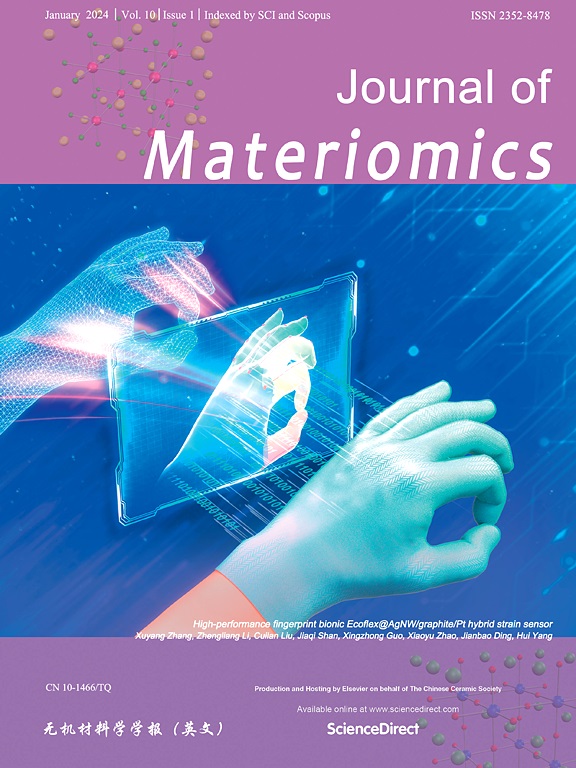Alloy scattering to optimize carrier and phonon transport properties in PbBi2S4 thermoelectric
IF 8.4
1区 材料科学
Q1 CHEMISTRY, PHYSICAL
引用次数: 0
Abstract
Ternary PbBi2S4 compound with crustal S-rich element and low lattice thermal conductivity is considered as a potential thermoelectric candidate. However, its inferior thermoelectric properties are rooted in the low electrical transport performance. Generally, enhancing electrical transport performance (power factor, PF) primarily entails optimizing the interdependent relationship between carrier mobility μ (linked to electrical conductivity σ) and effective mass m∗ (related to Seebeck coefficient S). In this work, we introduce the strategy of alloy scattering to independently enhance S without weakening μ and simultaneously reduce thermal conductivity, leading to a synergetic optimization of electron and phonon in PbBi2S4 thermoelectric. Heavy Sn alloying in PbBi2S4 presents uniform and orderly distribution on Pb sites as unclosed by the atomic-scale crystal structure observation. These massive Sn atom serves as scattering centers and turns the electron scattering mechanism to be dominated by alloy scattering, thus resulting in a ∼33% increment of S in Pb0.6Sn0.4Bi2S4. Meanwhile, Sn alloying aggravates phonon scattering further lowering lattice thermal conductivity and reaching an extremely low value of 0.34 W⋅m−1·K−1 at 773 K. Finally, a maximum zT of 0.68 at 773 K is obtained in Pb0.6Sn0.4Bi2S4, which is ∼ 45% higher than the pristine matrix. This study proves that the strategy of alloy scattering is effective in improving overall electrical transport properties as well as reducing lattice thermal conductivity, which paves a new way to develop high-performance thermoelectric materials.

求助全文
约1分钟内获得全文
求助全文
来源期刊

Journal of Materiomics
Materials Science-Metals and Alloys
CiteScore
14.30
自引率
6.40%
发文量
331
审稿时长
37 days
期刊介绍:
The Journal of Materiomics is a peer-reviewed open-access journal that aims to serve as a forum for the continuous dissemination of research within the field of materials science. It particularly emphasizes systematic studies on the relationships between composition, processing, structure, property, and performance of advanced materials. The journal is supported by the Chinese Ceramic Society and is indexed in SCIE and Scopus. It is commonly referred to as J Materiomics.
 求助内容:
求助内容: 应助结果提醒方式:
应助结果提醒方式:


